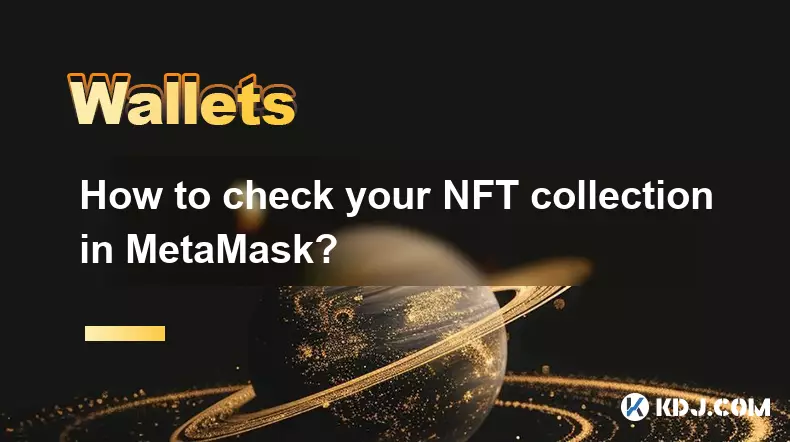-
 bitcoin
bitcoin $103094.926080 USD
3.95% -
 ethereum
ethereum $3398.208576 USD
6.43% -
 tether
tether $0.999971 USD
-0.04% -
 xrp
xrp $2.326205 USD
9.96% -
 bnb
bnb $947.145845 USD
4.46% -
 solana
solana $160.315987 USD
7.54% -
 usd-coin
usd-coin $1.000014 USD
0.01% -
 tron
tron $0.288163 USD
2.37% -
 dogecoin
dogecoin $0.164881 USD
5.50% -
 cardano
cardano $0.536519 USD
7.14% -
 hyperliquid
hyperliquid $40.526327 USD
6.62% -
 chainlink
chainlink $14.898178 USD
5.68% -
 bitcoin-cash
bitcoin-cash $483.923206 USD
4.44% -
 ethena-usde
ethena-usde $0.999280 USD
0.02% -
 stellar
stellar $0.276354 USD
6.32%
Trezor Security Model Explained: Protecting Your Private Keys
Trezor secures private keys in a tamper-resistant hardware wallet, ensuring they never leave the device while requiring physical confirmation for transactions.
Nov 05, 2025 at 11:40 am

Trezor Security Model Overview
1. The Trezor hardware wallet is built on a foundation of robust security principles designed to protect users’ private keys from both physical and digital threats. Unlike software wallets that store keys on internet-connected devices, Trezor isolates private key operations within a dedicated secure environment.
2. Each device uses a secure element combined with a microcontroller that runs custom firmware. This architecture ensures that private keys are generated, stored, and used entirely within the device and never exposed to the host computer or network.
3. The bootloader is cryptographically signed and verified, preventing unauthorized firmware updates. Users must manually confirm any firmware changes through the device’s physical button, reducing the risk of remote tampering.
4. Trezor leverages a hierarchical deterministic (HD) wallet structure based on BIP-32, BIP-39, and BIP-44 standards. This allows users to generate multiple addresses from a single seed phrase, enhancing privacy while maintaining recoverability.
5. The 12- or 24-word recovery seed is encrypted and never leaves the device during normal operation. When backing up, the seed is displayed directly on the Trezor screen, ensuring it cannot be intercepted by malware on the connected computer.
Physical and Digital Threat Protection
1. Trezor devices incorporate tamper-evident casing that reveals physical intrusion attempts. If someone tries to open or probe the device, visible damage occurs, alerting the user to potential compromise.
2. All sensitive computations, including digital signature creation, occur inside the isolated secure chip. Even if the host system is compromised, attackers cannot extract private keys because they are never transmitted outside the device.
3. PIN entry is randomized using a matrix overlay on the host screen, preventing keyloggers from capturing the sequence. The actual PIN processing happens only within the Trezor unit, making brute-force attacks impractical due to incremental lockout delays.
4. The device supports passphrase protection (BIP-39 extension), enabling plausible deniability. A single seed can unlock multiple wallets depending on the passphrase used, allowing users to hide valuable holdings behind decoy accounts.
5. Communication between Trezor and the host application uses a custom protocol layered over USB, minimizing attack surface. No data is cached on the computer, and session encryption prevents replay attacks.
User Authentication and Access Control
1. Every transaction requires explicit user confirmation via the physical buttons on the device. This two-factor approval process ensures that even if a user’s computer is infected, funds cannot be moved without manual interaction.
2. The absence of touchscreen or wireless interfaces reduces exposure to remote exploits. Bluetooth, Wi-Fi, or NFC capabilities are intentionally omitted to maintain a minimal attack footprint.
3. Firmware updates are signed by SatoshiLabs and verified before installation. Users are prompted to check digital signatures through the official Trezor Suite, adding an extra layer of trust verification.
p>4. On-device display shows all transaction details, including recipient address, amount, and network fees. Users must verify this information before approving, protecting against man-in-the-middle attacks that alter destination addresses.
5. Automatic timeout features deactivate the device after periods of inactivity, requiring re-entry of the PIN for subsequent access. This mitigates risks associated with unattended devices.
Frequently Asked Questions
Can Trezor be hacked if connected to a malware-infected computer?Trezor is specifically engineered to remain secure even when used on compromised systems. Private keys never leave the device, and all transaction approvals require physical button presses. While malware could attempt to manipulate transaction data shown on the host, the user will see the true values on the Trezor screen and can reject mismatches.
What happens if I lose my Trezor device?As long as you have your recovery seed written down securely, you can restore your wallet on any compatible hardware or software wallet. The seed contains all necessary information to regenerate your private keys. Never store the seed digitally—keep it offline and protected from environmental damage.
Does Trezor store my private keys in the cloud?No. Trezor does not upload or sync private keys, seed phrases, or related cryptographic material to any server. All critical data remains strictly on the device or under the user’s physical control through the backup seed.
How does Trezor handle new cryptocurrency additions?Trezor regularly updates its firmware to support additional blockchains and tokens. These updates are distributed through official channels and must be manually approved by the user. Support depends on integration with the underlying blockchain’s transaction format and signing mechanism.
Disclaimer:info@kdj.com
The information provided is not trading advice. kdj.com does not assume any responsibility for any investments made based on the information provided in this article. Cryptocurrencies are highly volatile and it is highly recommended that you invest with caution after thorough research!
If you believe that the content used on this website infringes your copyright, please contact us immediately (info@kdj.com) and we will delete it promptly.
- Ethena (ENA) Price Check: Riding the Crypto Rollercoaster
- 2025-11-07 02:50:01
- Balancer's $116 Million Exploit: A Rounding Error with Real Consequences
- 2025-11-07 02:35:01
- Crypto Carnage: Bitcoin Dip and Altcoin Plunge – Opportunity or Omen?
- 2025-11-07 02:40:01
- XRP, Ripple, and Market Strategists: Navigating the Crypto Landscape
- 2025-11-07 00:50:02
- One-Stop Shop Dreams: How Mergers are Shaping the Hobbyist Landscape
- 2025-11-07 01:30:02
- Digitap ($TAP) Presale: Bridging Crypto and Banking Like a Boss
- 2025-11-07 01:35:01
Related knowledge

How to check your NFT collection in MetaMask?
Nov 06,2025 at 08:20pm
Accessing Your NFTs in MetaMask Wallet1. Open the MetaMask browser extension or mobile app and ensure you are logged into your wallet account. Once in...

Why is the MetaMask swap feature failing?
Nov 06,2025 at 09:20pm
Understanding MetaMask Swap FailuresMetaMask, one of the most widely used cryptocurrency wallets, enables users to swap tokens directly within the int...

What to do if my MetaMask wallet was compromised?
Nov 06,2025 at 04:59pm
Immediate Steps to Take After a Compromised MetaMask Wallet1. Disconnect your device from any phishing websites immediately. If you clicked on a suspi...

How to reset your MetaMask account if transactions are stuck?
Nov 06,2025 at 05:39pm
Understanding the MetaMask Account Reset Process1. When transactions appear stuck in MetaMask, users often consider resetting their account to resolve...

Why is my token not showing up in MetaMask?
Nov 06,2025 at 06:39pm
Common Reasons Your Token Isn't Visible in MetaMask1. The token you're attempting to view may not be added to your MetaMask wallet by default. Most ER...

What are the best security practices for Coinbase Wallet?
Nov 06,2025 at 05:59am
Protecting Your Private Keys1. Never share your private key or recovery phrase with anyone. These credentials grant full access to your wallet and can...

How to check your NFT collection in MetaMask?
Nov 06,2025 at 08:20pm
Accessing Your NFTs in MetaMask Wallet1. Open the MetaMask browser extension or mobile app and ensure you are logged into your wallet account. Once in...

Why is the MetaMask swap feature failing?
Nov 06,2025 at 09:20pm
Understanding MetaMask Swap FailuresMetaMask, one of the most widely used cryptocurrency wallets, enables users to swap tokens directly within the int...

What to do if my MetaMask wallet was compromised?
Nov 06,2025 at 04:59pm
Immediate Steps to Take After a Compromised MetaMask Wallet1. Disconnect your device from any phishing websites immediately. If you clicked on a suspi...

How to reset your MetaMask account if transactions are stuck?
Nov 06,2025 at 05:39pm
Understanding the MetaMask Account Reset Process1. When transactions appear stuck in MetaMask, users often consider resetting their account to resolve...

Why is my token not showing up in MetaMask?
Nov 06,2025 at 06:39pm
Common Reasons Your Token Isn't Visible in MetaMask1. The token you're attempting to view may not be added to your MetaMask wallet by default. Most ER...

What are the best security practices for Coinbase Wallet?
Nov 06,2025 at 05:59am
Protecting Your Private Keys1. Never share your private key or recovery phrase with anyone. These credentials grant full access to your wallet and can...
See all articles










































































